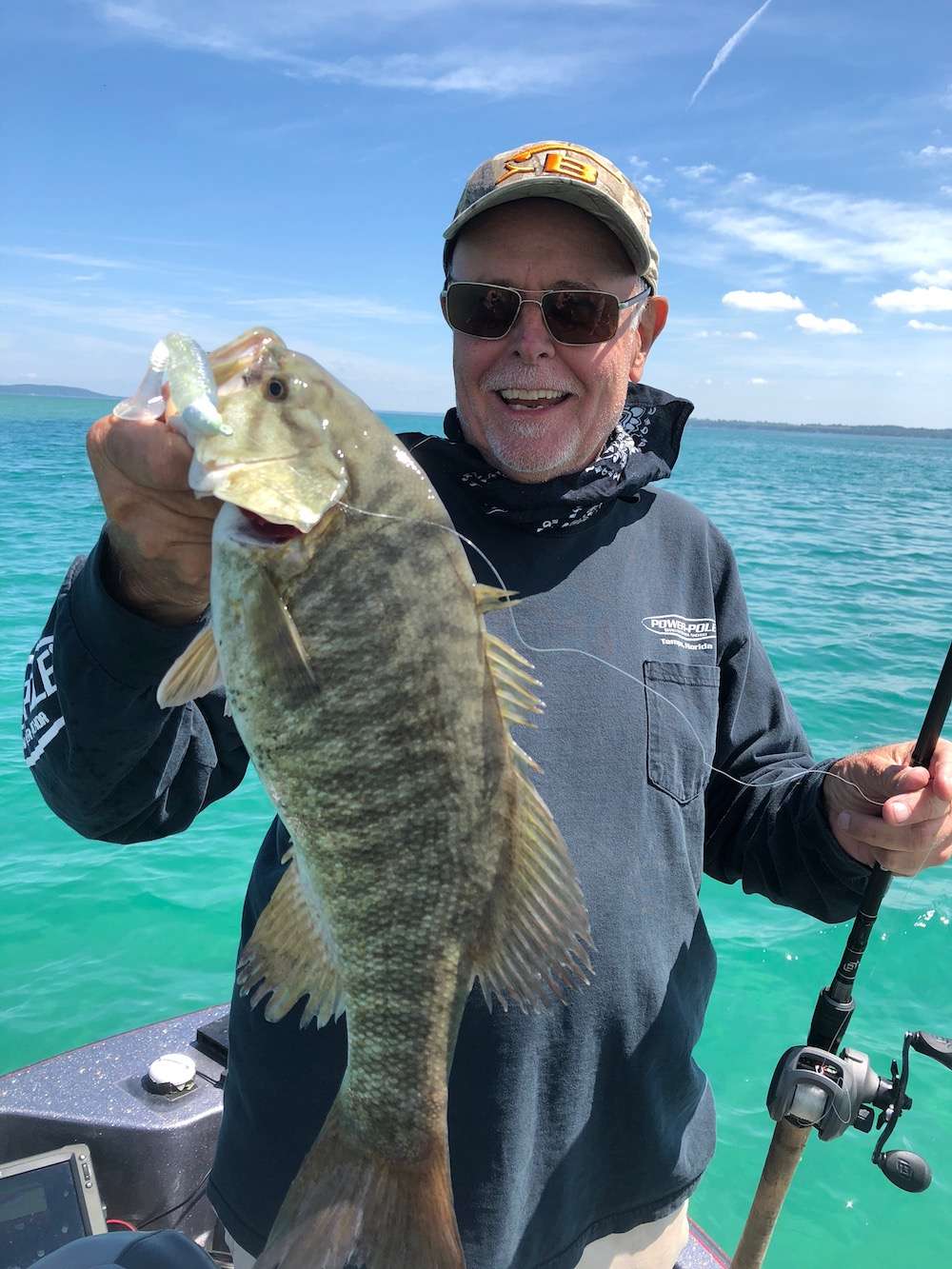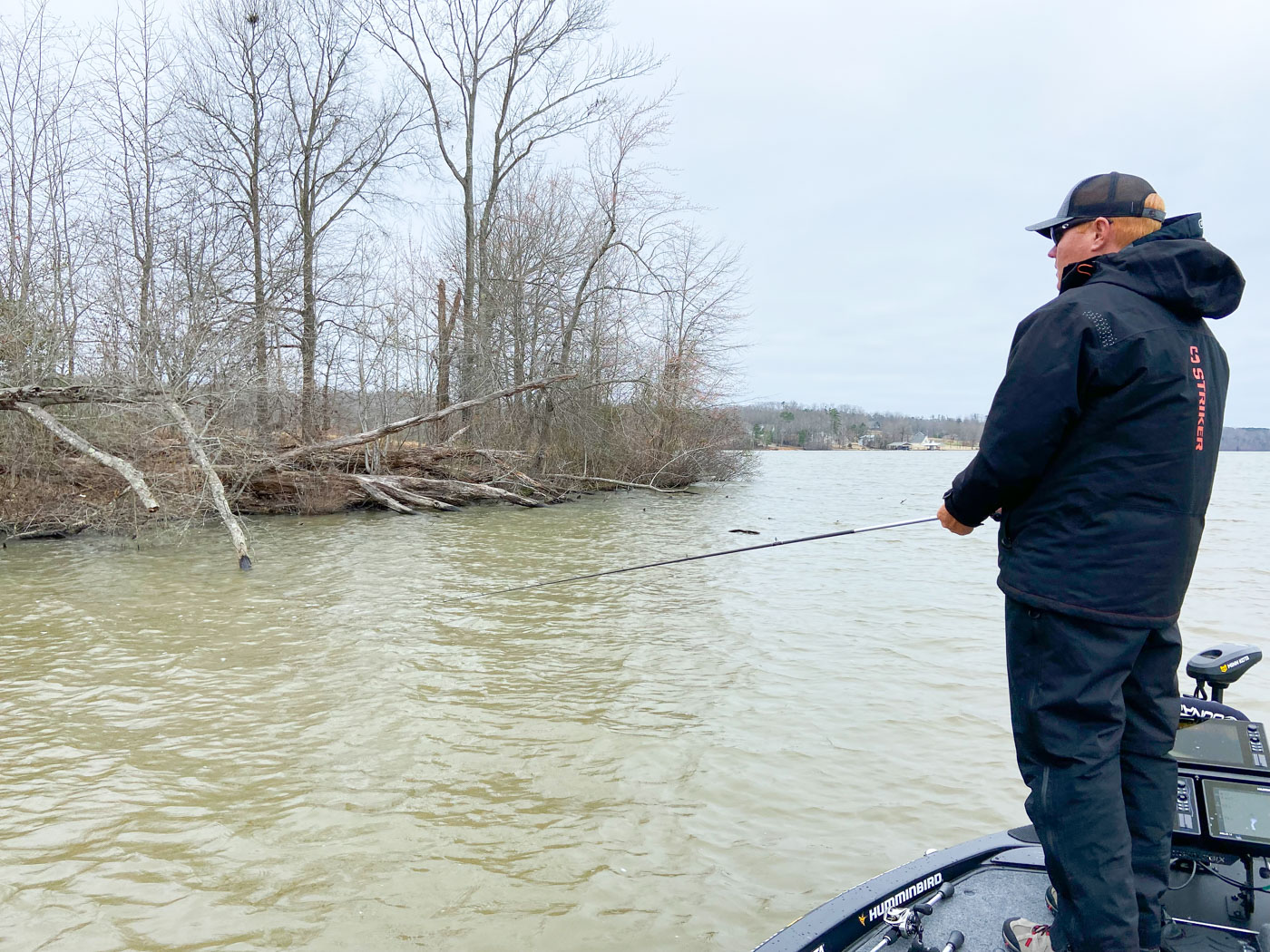
It’s early March: for many B.A.S.S. members, the unofficial kickoff of the bass fishing season. You’ve spent a dreary winter watching TV fishing show reruns and dreaming about getting back on the water. Then, finally, the weather begins to warm, so you make plans to hit the lake in the morning. Feverishly you prep your dusty tackle, spooling fresh line on your reels and replacing rusty hooks and crusty jig trailers.
Your alarm is set for 4 a.m. Dude, you are ready! Then what happens? You awake to find a freakin’ monster cold front rolling through bringing with it the complete package of angler misery: plummeting air and water temperatures, a brutal north wind, muddy water and lockjawed bass. You have the option of rolling over and going back to sleep. But, if you’re Elite Series pro Josh Stracner, you put on your (insulated) big-boy pants, launch your boat and endeavor to adjust your lures, presentations and mindset to the crappy hand that’s been dealt to you.
If you’re ready to learn to deal with cold fronts instead of just whine about them, zip up your parka and hop aboard Stracner’s boat on a blustery early March morning as he battles the elements and the bass on Lake T!
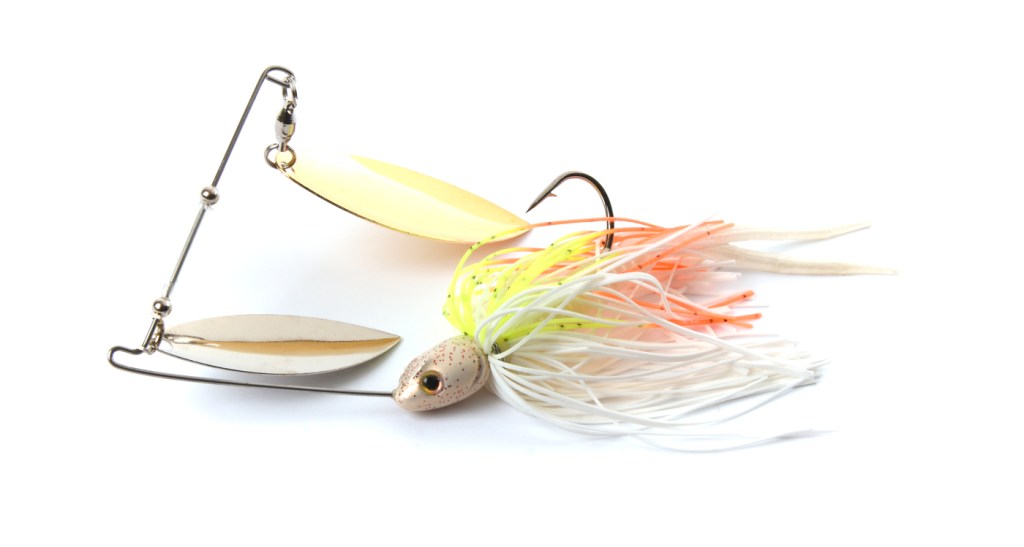
◗ 6:42 a.m. It’s 39 degrees and cloudy with a harsh north wind as Stracner and I arrive at Lake T’s deserted boat launch. The Alabama pro has arrived fresh from the 2022 Classic at Lake Hartwell, S.C., where he finished 37th. “I drove through rain to get here while watching the temperature drop from 80 degrees to 35,” he says as he unloads an arsenal of Lew’s rods and reels from a boat storage locker. “The lake looks muddy, but if it was as warm here last week as it was in South Carolina, hopefully the bass have moved shallow. I’ve found [that] once bass move up, cold fronts tend to impact their mood more than their location. They’ll generally move tighter to cover rather than make a significant depth change.” Stracner is sponsored by Strike King and will use their hard and soft baits exclusively throughout the day.
7 HOURS LEFT
◗ 6:50 a.m. We launch the Phoenix. Stracner checks the water: It’s 53 degrees and fairly muddy. “I actually like this color water. It could be a lot worse — it could be 42 degrees and milkshake muddy. I’m basically a shallow-water angler, so I’ll look for shallow places close to deep water where prespawn bass should be staging.”
◗ 7:01 a.m. Stracner idles to a gravel launch ramp in a residential cove and makes his first casts of the day with a chartreuse shad KVD Deep Jerkbait. “Most guys probably wouldn’t throw a jerkbait in this murky water, but I’m not most guys!” He bags a small yellow bass (panfish) on his first cast.
◗ 7:06 a.m. Stracner switches to a fire craw Chick Magnet flat-sided squarebill crankbait. “Flat crankbaits are deadly in cold water; their compact profile and subtle action trigger strikes from lethargic bass.”
◗ 7:11 a.m. Stracner moves to a rocky point and grinds a fire craw KVD 1.5 Flatside diving crankbait across the structure.
◗ 7:17 a.m. Having hauled water on the point, Stracner moves to a main-lake bank and casts the 1.5 to boat docks and scattered wood cover while drifting with the wind. “That north wind is brutal!”
◗ 7:19 a.m. Stracner switches to a 1/2-ounce chartreuse and white Thunder Cricket bladed jig with a white Blade Minnow trailer, again targeting docks and scattered wood cover.
◗ 7:20 a.m. He casts the Chick Magnet to a riprap bank. “Those rocks look great; too bad they don’t extend below the surface more than 6 inches!”
◗ 7:22 a.m. Stracner tries a 1/2-ounce chartreuse and white Tour Grade spinnerbait with a slender, split-tail white trailer on the riprap. “This spinnerbait has double willow [elongated] blades; I’d rather be throwing one with harder-vibrating Colorado [rounded] blades in this dirty water, but I don’t have any with me.”
◗ 7:24 a.m. Stracner chunks the spinnerbait to a laydown tree and a big fish loads on! He works it to the boat and grabs his first keeper bass of the day, a chunky 4-pound, 9-ounce largemouth. “She absolutely smoked it! You may not get a ton of bites during spring cold fronts, but you can often catch some real big fish. Four more like this one would make my day!”
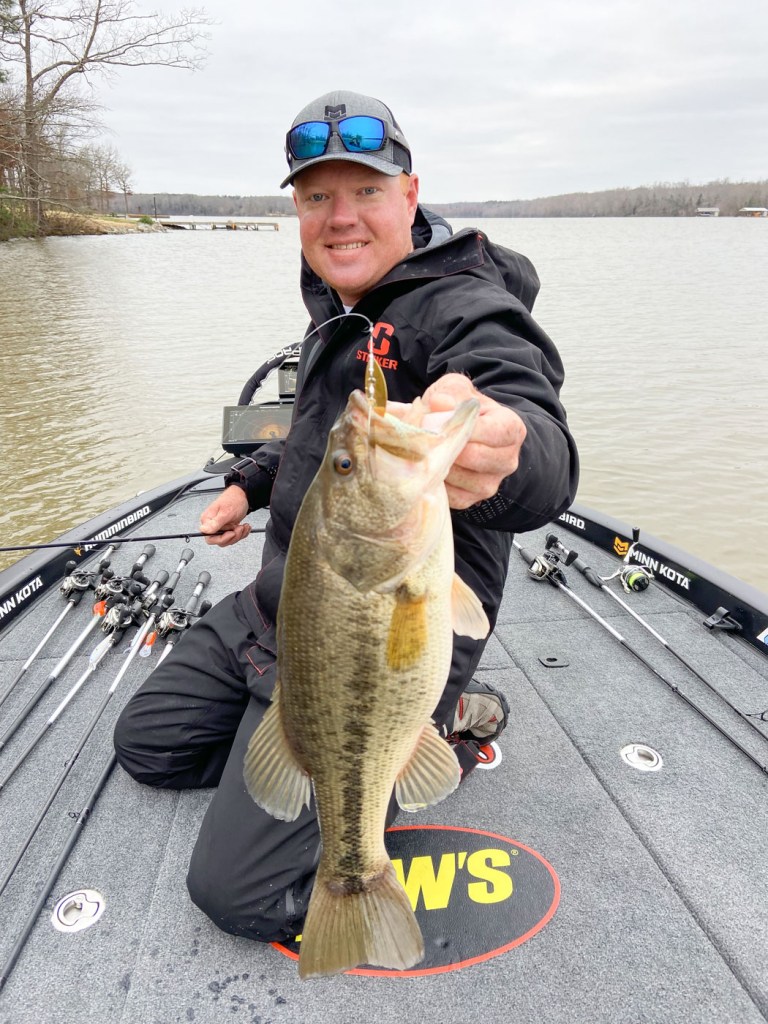
◗ 7:26 a.m. Stracner flips a Texas-rigged Rage Bug craw into the laydown “to see if anybody else is living there.”
◗ 7:39 a.m. Stracner has wind-drifted down a long stretch of main-lake shoreline while casting the spinnerbait, squarebill and bladed jig to docks and scattered wood. “That big fish was sitting at the juncture of two different laydowns. In lakes with lots of wood cover, they’ll often hold where two trees butt together or on isolated logs, stumps or stickups.”
6 HOURS LEFT
◗ 7:50 a.m. Stracner is casting the bladed jig to a wood seawall; no takers here.
◗ 7:58 a.m. He flips the Rage Bug to a dock. “I’m just hitting the outside edges of these docks in this cloud cover. If the sun comes out, the fish should slide up under ’em.”
◗ 8:01 a.m. Stracner expertly skips the bladed jig beneath a dock. “I’d like to see one about 9 pounds load on!” Me, too!
◗ 8:04 a.m. Stracner idles to an offshore rockpile and patiently works the jerkbait around the structure. “I’m not seeing any baitfish on my electronics.”
◗ 8:08 a.m. Stracner moves to a nearby secondary point and bags his second keeper, 2 pounds even. “This fish was holding tight to a stump on that little point.”
◗ 8:12 a.m. Stracner catches his third keeper, 1-13, off a long laydown on the spinnerbait. “Suddenly I’m not quite as cold as I was! I think I’ll keep this spinnerbait wet a while longer.”
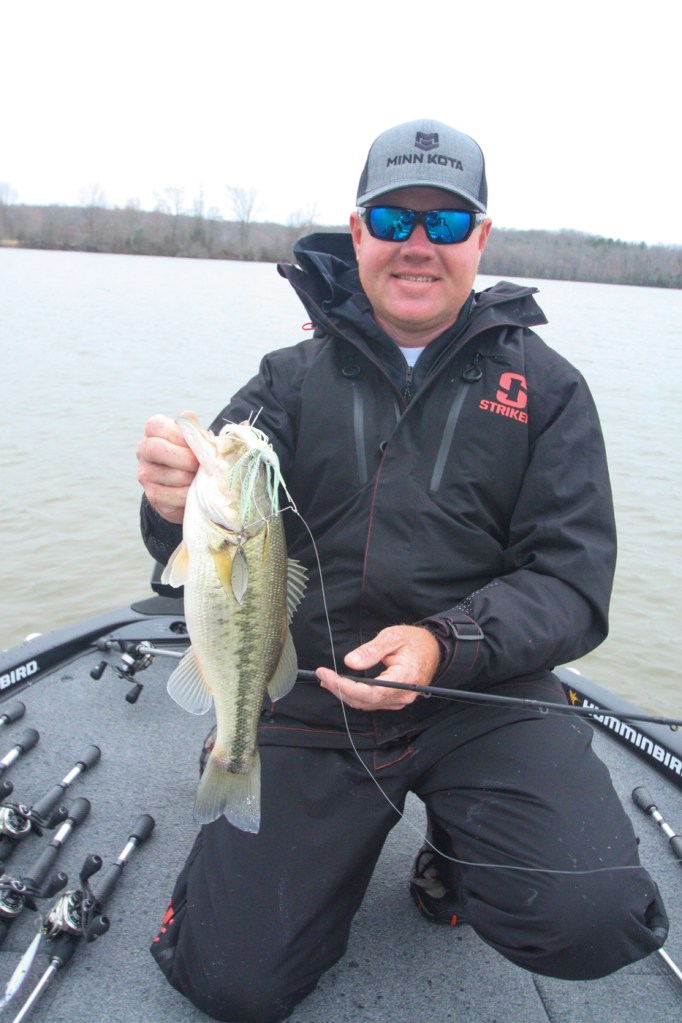
◗ 8:22 a.m. Stracner flips the Rage Bug into a logjam. The lure hangs up; he moves shallow to retrieve it and bangs his trolling motor into the woodpile. “Well, I reckon I screwed that place up!”
◗ 8:26 a.m. Stracner is grinding the bladed jig down a shallow bank with scattered stumps. “Stumps are good springtime cover, but there’s not enough deep water close to these.”
◗ 8:28 a.m. Stracner moves to a steeper main-lake bank with multiple laydowns and alternates among the spinnerbait, Thunder Cricket and Rage Bug.
◗ 8:34 a.m. Stracner hangs the spinnerbait in a sunken tree and retrieves it.
◗ 8:43 a.m. Stracner catches his fourth keeper, 1 pound, 4 ounces, off another laydown on the spinnerbait. “For a cold front day, I’m feeling pretty good right now. It’s early and I’ve almost got my limit.”

5 HOURS LEFT
◗ 8:50 a.m. The steep bank transitions into a long point, which Stracner probes with the 1.5 crankbait.
◗ 9:00 a.m. Stracner exits the point and runs to another point at the mouth of a tributary, where he tries the bladed jig and spinnerbait.
◗ 9:08 a.m. Stracner enters the creek arm and combs a series of laydowns with the bladed jig and spinnerbait. “The water is muddier up in here.”
◗ 9:12 a.m. The sun is trying to burn through the cloud cover as Stracner presses further up the shallow creek.
◗ 9:14 a.m. Stracner replaces the Rage Bug with a 1/2-ounce black-and-blue Hack Attack jig with a Rage Bug trailer. “This is my go-to dirty-water jig. It’s got a badass hook.”
◗ 9:16 a.m. Stracner continues up the creek, pounding wood cover with the jig and spinnerbait.
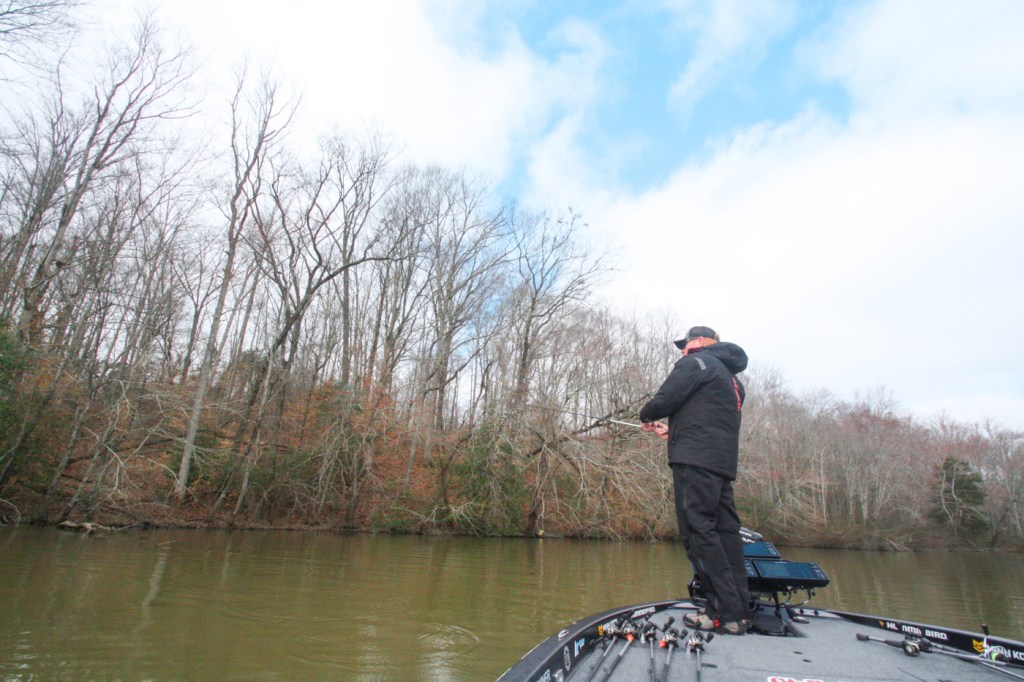
◗ 9:26 a.m. Stracner hangs the spinnerbait in a sunken tree, retrieves it and reties. He’s fishing the lure on 17-pound fluorocarbon with a 7.5:1 reel. “In windy conditions, I try to keep my spinnerbait up where I can barely see the blades flashing. I’d rather be fishing one with Colorado blades in this dirty water, but so far the willow blades have worked.”
◗ 9:34 a.m. Stracner hangs the spinnerbait in a gnarly laydown and is forced to break it off. He digs through his tackle stash, can’t find an identical chartreuse and white lure and settles on another 1/2-ounce Tour Grade spinnerbait in the cole slaw (chartreuse, white and hot orange) color pattern.
◗ 9:43 a.m. Stracner spots scattered stumps in the middle of the creek on his side-scanning graph and hits them with the Chick Magnet.
4 HOURS LEFT
◗ 9:50 a.m. Stracner moves to the opposite shore of the tributary and bangs the Chick Magnet off a boathouse. “I haven’t had a nibble on a dock so far, but with the sun coming out, they may start producing.”
◗ 9:59 a.m. Stracner leaves the creek and hits a nearby point with the spinnerbait.
◗ 10:09 a.m. No love on the point, so Stracner continues downlake against the wind, pounding shoreline wood with the spinnerbait and Chick Magnet.
◗ 10:15 a.m. Stracner flips the jig to a big stump. What’s his take on the day so far? “The morning started out great with one almost 5 pounds and three more keepers in short order, but I haven’t had a bite in an hour and a half, even though I’ve been keying on shoreline laydowns and stumps. So-called ‘bite windows’ like that are common in early spring; I’ve learned to not panic when a bite window closes because I know another one will eventually open up. All my bites have been aggressive, and that first fish convinces me that there are some big ones in this lake. The sun coming out should help pull them tighter to cover, too. I’m going to keep my head down and continue grinding away at them.“
◗ 10:24 a.m. Stracner zips further downlake to a main-lake point with submerged rocks and stumps, which he hits with the Chick Magnet.
◗ 10:31 a.m. He probes a series of docks with the flipping jig, spinnerbait and Thunder Cricket. “I can’t believe there’s not a big fish hanging around one of these docks.”
◗ 10:37 a.m. Stracner moves to a rock-lined bank, where he tries the spinnerbait. Nothing there.
◗ 10:44 a.m. He dredges the Chick Magnet parallel to a seawall.
3 HOURS LEFT
◗ 10:50 a.m. Stracner tries the jerkbait off a slick mud point.
◗ 10:59 a.m. Stracner makes multiple presentations to a boathouse with the Thunder Cricket. “There’s been no dock bite whatsoever.”
◗ 11:17 a.m. Stracner moves to another main-lake point and tries the jerkbait, again without success.
◗ 11:22 a.m. Stracner has graphed a big submerged brushpile off the point. He bumps the jig through the cover; it comes back unscathed.
◗ 11:29 a.m. Stracner makes a high-speed run up a large tributary arm to a long rock point, where he casts the Chick Magnet and spinnerbait.
◗ 11:37 a.m. Stracner has patiently, but unsuccessfully, pounded the point from several angles. “I’m just not seeing many signs of life on my electronics on these offshore places.”
◗ 11:43 a.m. Stracner roots the 1.5 along a rock bank. Again no takers. “Rocks and docks — neither of them have been worth a flip today!”
2 HOURS LEFT
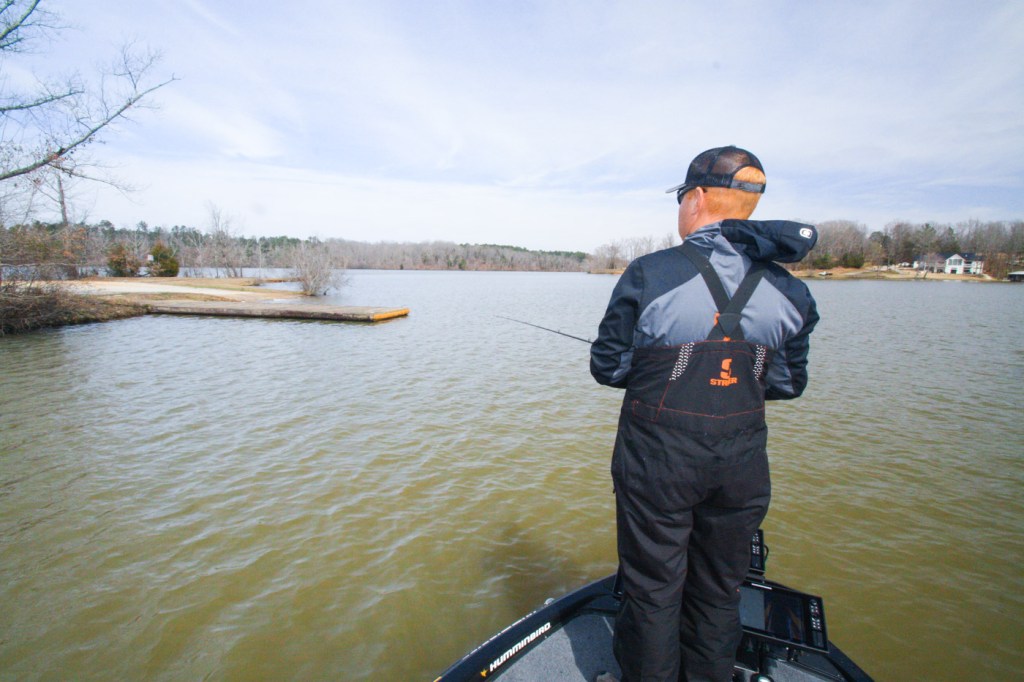
◗ 11:50 a.m. Stracner moves to a main-lake point he fished earlier and tries the Chick Magnet around a dock. “Before I started, if I had to pick one lure to throw today, it would have been a squarebill, but I haven’t had a single bite cranking.”
◗ Noon. Stracner retraces his early morning route, casting the spinnerbait down a main-lake shoreline. “Hopefully, one of those dang bite windows will crack open so I can catch my limit and start culling!”
◗ 12:16 p.m. Stracner grinds the Thunder Cricket across a gravel boat ramp.
◗ 12:22 p.m. Stracner arrives back at the laydown where he caught his 4-9. He hits the cover with the jig and spinnerbait. “I was hoping that tree might have reloaded with a bigger fish!”
◗ 12:30 p.m. Stracner continues moving uplake, combing docks and wood with the spinnerbait. It’s clouding up again.
◗ 12:33 p.m. Stracner switches Thunder Cricket colors to bluegill with a blue flake trailer and resumes targeting shoreline cover.
1 HOUR LEFT
◗ 12:50 p.m. Stracner races further uplake to pitch the jig and spinnerbait around a laydown on a shallow point.
◗ 1:16 p.m. Stracner hops to a sloping bank and tries the spinnerbait and jig.
◗ 1:20 p.m. Stracner moves into a shallow cove he fished earlier and retrieves a chartreuse shad Red Eyed Shad lipless crankbait. Nothing here.
◗ 1:25 p.m. His time running out, Stracner roars back downlake into a murky cove where he casts a green pumpkin Ocho stickworm rigged wacky style around laydowns. “You know I’m desperate when I break out a spinning rod!”
◗ 1:32 p.m. Stracner makes his final casts of the day to a rock bank with the spinnerbait and squarebill.
◗ 1:50 p.m. Time’s up! Stracner ends his day on Lake T with four keeper bass totaling 9 pounds, 10 ounces.
THE DAY IN PERSPECTIVE
“The day started out awesome with that big fish, but once the cold front moved through and the skies started clearing, the bite window slammed totally shut,” Stracner told Bassmaster. “One surprise was that I had zero strikes on docks and rocks, places that normally hold fish during frontal passages. If I were to fish this lake tomorrow under these same conditions, I’d use the exact same approach as today and just hope the bite window stays open a bit longer.”
WHERE AND WHEN JOSH STRACNER CAUGHT HIS FOUR BIGGEST BASS
1) 4 pounds, 9 ounces; 1/2-ounce chartreuse and white Strike King Tour Grade spinnerbait with white split-tail trailer; laydown tree; 7:24 a.m.
2) 2 pounds; same lure as No. 1; stump on secondary point; 8:08 a.m.
3) 1 pound, 13 ounces; same lure as No. 1; laydown tree; 8:12 a.m.
4) 1 pound, 4 ounces; same lure as No. 1; laydown tree; 8:43 a.m.
TOTAL: 9 POUNDS, 10 OUNCES

